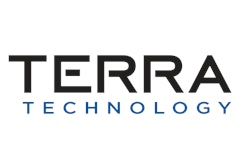What does the shopper want? The forecasting trend today in consumer packaged goods is, or should be, looking backwards from the shopping cart. One example is the paper goods industry.
“The paper industry has been focused on lower inventory,” said Robert Byrne, President and Chief Executive Officer of Terra Technology. “It’s an extremely competitive industry and slower than other CPGs to focus on the consumer. They have to focus on the shopping basket and back from the consumer, not on the warehouse.”
The average error in consumer packaged goods (CPG) forecasting is more than 50 percent per week, added Byrne. “If your forecast says you’ll sell 10,000 cases next week, half the time you end up selling 5,000 to 15,000. It’s very difficult to plan.”
Why? Byrne said it’s because demand planning historically ignores current conditions. One company in that boat was Kimberly-Clark, a $20-billion corporation that makes a number of consumer products, including Kleenex, Kotex, Huggies, Viva and more.
One solution: Demand Sensing, which incorporates short-term demand data into forecasts to reduce error and increase inventory accuracy. It’s done by receiving data from the retailer to inform the supply chain, Byrne added. “You see what’s being bought in the stores today and then predict what the retailers will need next.” In other words, look backwards from the shopping cart.
In its 2012 Forecasting Performance Benchmark Study, Terra pointed out, “The Consumer Packaged Goods (CPG) industry faced another year of challenges from economic turbulence and weak consumer confidence in 2011. North American shipments contracted slightly and the study shows evidence of a heightened reliance on marketing activities to drive sales. Promotions continued to play an important role in 2011, with promotional volume climbing by eight percent. Innovation was impressive, with new products accounting for one third of all items. Given the volatility and rapid pace of promotional activities and product innovation, the gradual increase in forecast error to 53 percent and bias to seven percent comes as no surprise. Almost half the items of the collective dataset have less than two years of history, making it unreasonable to expect the seasonal statistical methods used in Demand Planning to provide much value.”
In 2009, Kimberly-Clark took a look at its ordering patterns in an effort to increase its inventory and distribution efficiency.
“Kimberly-Clark had POS [point-of-sale] data for a long, long time, largely in consumer research,” said Greg Schroeder, Senior Manager, Supply Chain Advanced Capability at Kimberly-Clark. “We recognized that we needed to harness that data because it was so huge and disparate across retailers. It was a pretty poor proxy for what we’d ship. We made the decision to understand capability in demand sensing, so we started a pilot in 2009 on that premise.”
With Demand Sensing, K-C receives daily point-of-sale and customer data, allowing its 15 manufacturing facilities—reduced from 19, another benefit—to make instant decisions.
The company also decided to look at its cash conversion cycle at the same time, added Scott DeGroot, Director of Supply Chain Strategy & Development at Kimberly-Clark. “Our cash conversion cycle was in the wrong direction in relation to our peers. Inventory was the problem; we need to streamline inventory so it wouldn’t hurt service. That’s why we needed to improve forecast accuracy.” Once it adopted Demand Sensing, Kimberly-Clark reduced its cash conversion cycle by 20 days.
Why is forecast accuracy such a big deal for Kimberly-Clark? One easy example is its $1 billion facial tissues business. During the high-volume flu season, a one-day reduction in safety stock for that business unit can equate to $10 million in savings across the supply chain network. But Kimberly-Clark’s previous manual methods of tracking demand made it tough to manage safety stock very closely. So it used the supply chain overhaul to rethink this process.
Better forecasts translate directly into better business decisions. In her Supply Chain Shaman blog, Lora Cecere wrote, “What is a six percent improvement in forecast accuracy worth? Based on AMR Research correlations, a six percent forecast improvement could improve the perfect order by 10 percent and deliver a 10-to-15 percent reduction in inventory. The greatest impact is seen in slow-moving items on the tail of the supply chain.”
Infusing Demand Sensing into the demand management process can affect many Key Performance Indicators (KPIs) closely monitored by management:
- Financial KPI’s
- Revenue and Profit Margins: sense and react to upswings in demand to capture additional revenue and increase profit margins by avoiding costly supply chain inefficiencies stemming from demand uncertainty
- Cash-to-Cash Cycle Time: Free up cash flow and achieve higher return on invested capital by reducing inventory levels of products.
- Supply Chain KPI’s
- Perfect Order: Improve customer service by producing the right product mix matched to actual demand.
- Production Efficiency: Stabilize production schedules and avoid emergency changeovers to meet surges in demand.
- Logistics: Reduce transportation costs by avoiding transshipments and expensive emergency shipments; and reduce warehouse costs with lower inventory levels.
“One of the numbers we talk about is 20 percent improvement in lag time,” said Schroeder. “That correlates into safety stock improvement across the network and is very substantial in terms of inventory. We’re heavily focused on that.”
There are other benefits beyond inventory reduction, added DeGroot. Natural disasters, such as Hurricane Sandy, can of course wreak havoc on a supply chain. “Our previous demand solution didn’t help with forecasting. With Terra, we get a daily release on the marketplace and retailers’ ability to get stock back onto the shelves.”
The installation and execution of Demand Sensing, said DeGroot, helped Kimberly-Clark become “a more demand-driven supply chain.”















